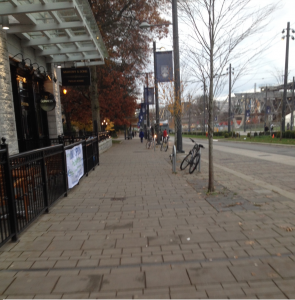Our CBEL research process, challenges, and creative solutions
We have been working on analyzing our surveys this week, since our LFS 350 class last Wednesday. To make it easier to understand, we categorized the purpose of our survey questions into three themes: labelling issues, educational issues, and motivational factors. Splitting our survey questions into different categories helped us clearly understand the purpose of each question and how it is relevant to our research.
Looking at our survey, we noticed we had quite a variety of responses to one of our questions regarding which snacks to add to campus vending machines. Because of this variety, it was a challenge coming up with one general snack option to recommend to Victoria. In other words, while writing the survey, we were hoping to see a majority of similar responses for this question, but we ended up getting mixed results instead. Some students, for example, would like to see more candy and energy drinks while other students prefer seeing nuts and mints in vending machines. In addition, we had to disregard some results, because responses were unreasonable: some students wanted to see sushi and baked goods, both perishable foods that cannot be placed in vending machines. We came up with the solution to find responses that were similar and categorize these responses into broader terms. For example, apple chips, fruity granola bars, and raisins can be categorized as “healthy fruit snacks”.
We also encountered a few challenges this week that came up when we received a response to an email we had sent to our community partner, Victoria. In particular, these challenges we faced had to do with our audit of the GSVM: vending machine sales are not broken down by items, but by machines, so it is impossible to tell how well the healthier options are selling individually. Also, there has been an increase in campus vending machine sales due to the machines now accepting UBC cards for payment, so we need to be careful not to attribute this sales increase to the “healthier choices”. Since the sales data of those machines reflect only the percent of cash, cashless, or ubc card sales, we cannot tell if labelling has an impact on sales. Our current audit of the vending machines at Gage Residence and at the Student Union Building will focus on recording if proper labelling is being adhered to. In the audit we will also take note of dust-accumulation, which will give us an idea of turnover rates of food and beverage products. The beverage vending machines pose an issue because we are not able to see inside them. We can therefore only audit them by outer-appearance (lights, properly maintained, clean).
What’s To Come
We are fortunate that our research community is so close at hand: once we are on campus, we are immersed in our community. This Wednesday, several group members are auditing the campus vending machines both on the upper floor of the Student Union Building, and in Gage residence (These are machines that follow the GSVM). We are undertaking this review in order to get a clear idea on how well the GSVM is performing. To standardize our approach, since we are not able to go all together, we created a checklist for everyone to follow. Our checklist includes:
- Observing for dust inside/outside of the vending machines
- Checking to see if the “Healthy Choices” signage is correctly displayed for each product
- Auditing the planogram (arrangement of snacks within the machine) to ensure that location of healthier options is appropriate to promote them
The deadlines for the CBEL final research paper, plenary presentation, and CBEL project homeroom final presentation are fast approaching. To stay on top of these deadlines, each group member has been assigned specific tasks for each of the aforementioned components. The task for each member is outlined in the following.
Plenary presentation
- Introduction to the project and community: Judy
- Research Question and Methods: Judy
- Results and Interpretation of the results based on the course concepts and reflections: Alex
- Question and Answer: Alex
- Editing, and addition of ideas to each section: All group members!
Alex and Judy will be doing the plenary presentation in front of the LFS 350 class. Since it is a brief presentation we feel it will be easier to have all group members contribute to what will be said during the presentation, but have fewer people actually go up to present them. This will be balanced out with all of the group members doing the final presentation, while Judy and Alex take on smaller roles for that.
CBEL project homeroom final presentation
- Introduction and Research Questions: Rosemary
- Methods: Aveir and Katherine
- Results: Judy
- Discussion: Tyra and Carmen
- Reflection: All group members
- Recommendation: Alex
- Editing, and addition of ideas to each section: All group members!
Each group member will be responsible for presenting their section to our homeroom.
CBEL final research paper (Still to be decided…)
- Executive Summary: All group members!
- Introduction: Rosemary
- Research Methods: Alex
- Findings: Judy
- Recommendation and Conclusions: Tyra
- References and appendices: All group members!
- Editing, and addition of ideas to each section: All group members!
We plan to write our first draft of the final research paper once we have all our data from the audit, and survey, analyzed.
Amidst our busy schedules, we will take time this week to reflect on Remembrance Day, and the individuals who fought to serve our country.
Group 26




Your Blogs have covered your activities and progress well. Thanks for the updates